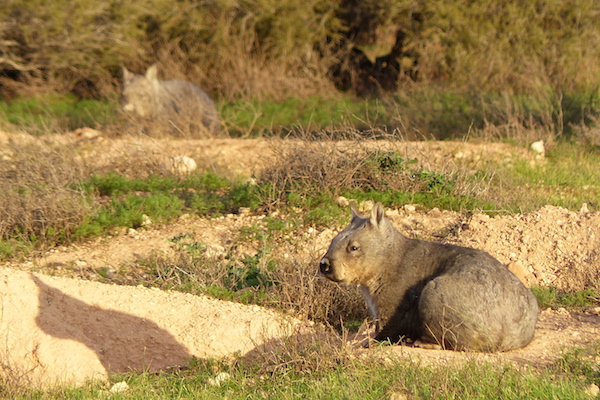The Southern Hairy-nosed Wombat (Lasiorhinus latifrons) is one of three living species of wombat. It is found mainly in South Australia: in the Murraylands, scattered in Yorke Peninsula and in the Nullabor Plains in the west of the state, crossing over into Western Australia. The other two species are the Bare-nosed Wombat found in cooler areas of New South Wales, Victoria, Tasmanian and southeast South Australia and the highly endangered Northern-hairy Nosed Wombat of Queensland.
The Southern Hairy-Nosed Wombat is the faunal emblem of South Australia. It has been a focus animal for the Society since the establishment of the Moorunde Wildlife Reserve in 1968.
Wombats are the largest burrowing marsupial. Southern Hairy-nosed wombats usually rest in burrows during hot dry days and emerge at night to feed on a range of herbaceous plants. Wombats have a strong sturdy body. Southern Hairy-nosed Wombats grow to about 30-35cm tall, about 1m long and weigh up to about 35kg.

Southern Hairy-nosed Wombat and his shadow.
All species of wombat have suffered population fragmentation since European settlement of Australia through hunting, culling, land clearing, introduction of toxic weeds and competition from other native and feral grazers.
Moorunde was established at a time of major drought and many native animals were suffering the exaggerated conditions of drought and land erosion resulting from the inappropriate land clearing that had occurred in the region since white settlement. The reserve was established to provide a sanctuary for Southern Hairy-Nosed Wombats with the hope that their populations would remain viable in this region.
With periods of drought in the last couple of years, many wombats at Moorunde and the surrounding areas have been suffering severe malnutrition leading to numerous ailments including skin lesions, fur loss and liver damage, often leading to premature death. Read more about this.
